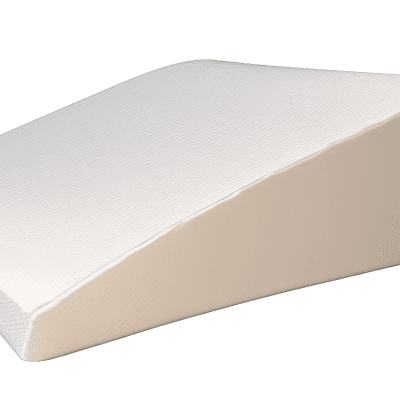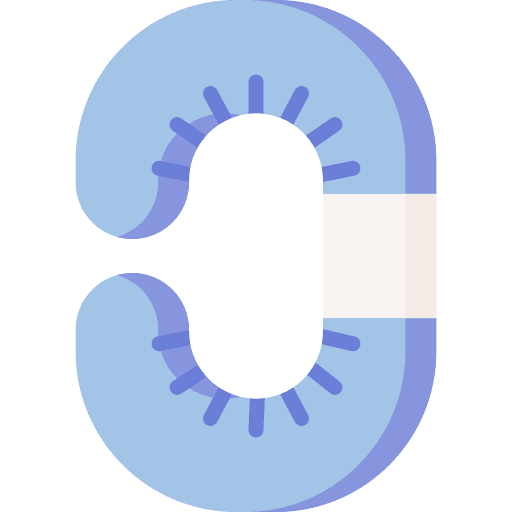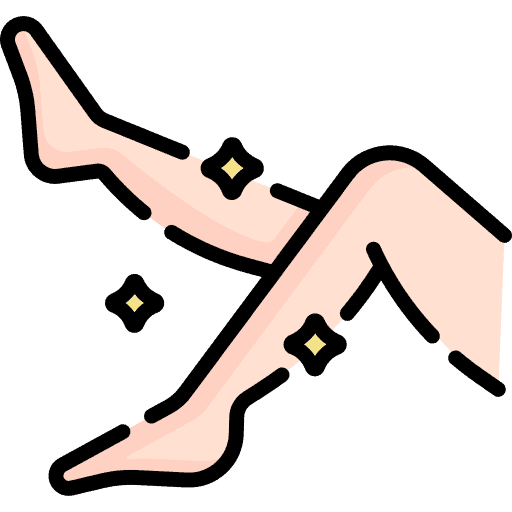Are you grappling with sleep apnea? Often it can just appear as severe snoring, but at its worst, it’s a potential threat to life that demands your immediate attention. Addressing your sleep apnea properly is well worth the effort. Of course, it’s challenging to rectify your sleep apnea by adjusting your posture or clearing your airway when you’re asleep. Hence, it’s crucial to adopt the use of aids and devices that promise you a sound sleep. A good starting point could be an ergonomic pillow.
We’ve compiled a succinct shopping guide with solutions to some common queries. Read on to discover more!
Our Recommendation 🇺🇸
Starting your day right often hinges on a restful night’s sleep. Factors like acid reflux, neck and back discomfort, post-operative conditions, and other medical issues can interfere with this rest. The Kӧlbs Bed Wedge is designed to offer the ideal posture for a peaceful sleep. It boasts a top layer of 1.5” plush memory foam, ensuring a comfy rest, while the high-density medical-grade foam at its core guarantees the right balance of firmness and support. Additionally, the bed wedge is adorned with a fashionable jacquard pillow cover, bringing a touch of elegance to your room. Trust Kӧlbs for top-notch sleep wedges and cushions that prioritize comfort.
How Frequently Should I Use a Sleep Apnea Pillow?
When you purchase a new pillow, it might take your body some time to adjust. You might require a couple of nights before you’re entirely comfortable and can sleep through without any disruptions. This issue becomes more pronounced with a sleep apnea pillow, as they typically have different shapes, contours, and firmness levels than regular pillows. Transitioning to a sleep apnea pillow full-time can potentially cause neck discomfort and additional spine pressure.
To ensure a smooth and comfortable transition, it’s recommended to use your sleep apnea pillow every alternate night initially. Once you’re sure that the pillow is enhancing your sleep quality, you can then switch to using it every night.
What’s the Most Suitable Sleeping Position for Sleep Apnea?
Sleeping on your side and maintaining an excellent posture with a sleep apnea pillow is among the most effective ways to keep your airway clear all night. Although not the most ideal due to gravitational pull, you might also find success in sleeping on your back when you couple it with a sleep apnea pillow. However, sleeping face down is deemed to be the worst position as it risks obstructing your airway with a surface (whether it’s your pillow or your bed) that covers your mouth.
What Other Methods Can Help Treat Sleep Apnea at Night?
While a sleep apnea pillow can significantly enhance your posture and ensure your airway remains unblocked, there are other measures you might consider depending on the severity of your case. Consult your doctor to see if any of the following aids suit you:
- Use a CPAP (continuous positive airway pressure) device
- Use an oral appliance
- Adjust your sleeping position
- Use a humidifier
Is it Possible to Eliminate Sleep Apnea?
Yes, it’s possible. However, because there’s no single cause of sleep apnea, there’s no one-size-fits-all solution. Your specific case and its cause will determine the most effective treatment for your sleep apnea. Always seek your doctor’s advice before trying any of these potential solutions:
- Weight reduction
- Tonsil removal
- Adenoidectomy
- Palatoplasty
- Other surgical procedures
- Overbite correction






